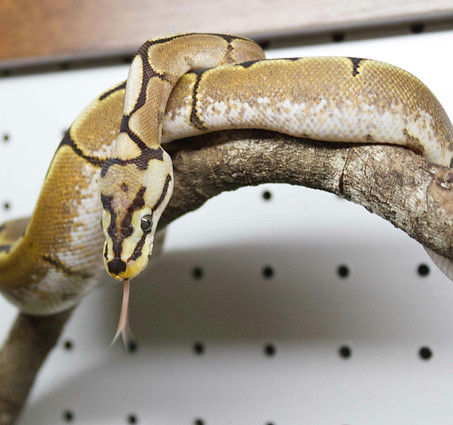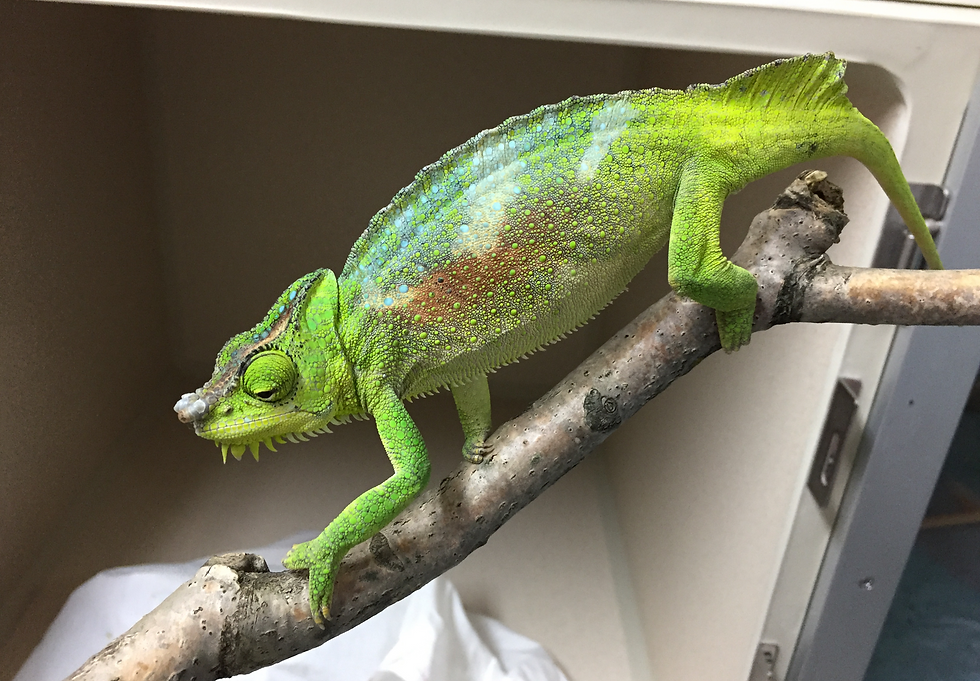Please call ahead to schedule an appointment. Occasionally, there are longer wait times when our staff is dealing with a medical emergency. We appreciate your patience. Book your appointment here >

Snake Care Guide
Snake Care Tips: Everything You Need To Know About Your Pet Snake
Snakes might not wag their tails or purr when they're happy, but they make fascinating, low-maintenance pets for those willing to understand their unique needs. From setting up the perfect enclosure to knowing when your slithery friend isn't feeling its best, good snake care goes beyond just dropping a mouse in the tank. Whether you're a first-time owner or a seasoned reptile enthusiast, this guide covers everything you need to know to keep your snake healthy, happy, and safely inside its enclosure—because let’s be honest, nobody likes a surprise escapee.

The Natural History of Snakes
Snakes have been around for over 100 million years, evolving into more than 3,000 species found on every continent except Antarctica. They have adapted to a wide range of environments, from deserts and forests to grasslands, swamps, and even urban areas. While most snakes are non-venomous constrictors, some use venom to immobilize prey.
Snakes rely on their forked tongues and specialized Jacobson's organ to detect scents in the air, making up for their relatively poor eyesight and lack of external ears. They shed their skin periodically in a process called ecdysis, which allows for growth and removal of parasites. Their diets are strictly carnivorous, ranging from insects and amphibians to birds and mammals, depending on the species.
Some of the most common pet snakes include corn snakes, which are docile and easy to handle, making them great for beginners. Ball pythons are known for their tendency to curl into a ball when stressed, while king snakes and milk snakes are known to be very active. Boa constrictors are another common pet that grows much larger and requires more space and experience.
How to Care for Your Pet Snake
Housing
A properly sized enclosure is key to your snake’s well-being. The enclosure should be at least twice the length of your snake and include:
-
Secure, escape-proof lids
-
A fresh water bowl large enough for soaking
-
Hiding spots on both the warm and cool sides
-
Non-loose substrate options such as reptile carpet, stick-on vinyl, or paper towels (avoid loose substrate such as dirt, wood shavings, or reptibark as these can cause impaction and harbor bacteria and parasites. It also makes it difficult to monitor your snake's feces and urates)
-
Branches or climbing structures for semi-arboreal species
Handling & Acclimation
A newly acquired snake should be left alone in its enclosure for 1-2 weeks to acclimate. Handle your snake gently, supporting its body fully and avoiding sudden movements. Some snakes are more active in the evening, making this the best time for interaction. Remember to not handle your snake for a few days after feeding to allow them to digest.
Snake Behavior
Snakes communicate through body language, and while they don't express emotions the way mammals do, they display clear behavioral cues. A relaxed snake will move smoothly and explore its surroundings, while a defensive or stressed snake may coil tightly, hiss, rattle its tail (even non-venomous species can do this), or strike if it feels threatened. Some species, such as ball pythons, may ball up rather than attack as a defense mechanism.
Most snakes are nocturnal or crepuscular, meaning they are most active at dawn and dusk. In the wild, they spend much of their time hiding under logs, in burrows, or in trees, depending on the species. Pet snakes will exhibit similar behaviors, often retreating to hide boxes, while smaller species may attempt to hide under water bowls and other accessories in the tank or burrow in leaf litter or moss strewn in your tank. If a snake spends excessive time hidden and refuses food, it may indicate stress or an underlying health issue.
Snakes are solitary by nature and do not require social interaction with other snakes. In fact, housing multiple snakes together can lead to stress, competition, and even cannibalism in some species. While they do not recognize their owners in the same way a dog or cat would, they can become accustomed to handling and associate their keeper with feeding and safety.


Snake Diet & Nutrition
Snakes are obligate carnivores, meaning they require a diet of whole prey. In captivity, this typically consists of:
-
Hatchlings & Juveniles: Pinkie or fuzzy mice (fed every 5-7 days)
-
Adults: Small rodents like mice or rats (fed every 7-10 days)
Frozen-thawed rodents are preferred over live prey to prevent injuries. Always feed your snake in a separate enclosure to reduce the risk of your snake associating you solely with food, which can lead to striking when you open the tank for handling.
Some snakes may refuse food if they are stressed, in a shedding cycle, or experiencing seasonal fasting periods. Offering food at night, when most snakes are naturally hunting, can encourage feeding. If your snake refuses food for an extended period, consult an experienced exotic vet to rule out health issues.
Water is just as important as food. Snakes should always have access to fresh, clean water in a shallow bowl large enough for soaking. Many snakes prefer to drink when they feel secure, so placing the water dish near a hiding spot can encourage hydration. Snakes may also defecate in their water, so it should be checked and replaced daily to maintain hygiene.
Medical Care For Your Pet Snake
Routine veterinary check-ups are recommended at least once a year to ensure your snake remains in optimal health. An experienced reptile veterinarian can perform a thorough physical examination, diagnostic tests, check for parasites, and monitor for early signs of illness that might not be immediately obvious to an owner. Regular vet visits also provide an opportunity to discuss diet, enclosure conditions, and any behavioral concerns that may indicate underlying health issues.
Common health issues in pet snakes include:
-
Intestinal parasites
-
Respiratory infections
-
Stomatitis (mouth rot)
-
Retained shed (dysecdysis)
-
Skin infections (scale rot)
-
Internal blockages or constipation
-
External parasites (mites and ticks)
How Can You Tell If Your Snake Is Sick?
Signs of illness in snakes can be subtle. Watch for:
-
Labored breathing or wheezing
-
Loss of appetite for extended periods
-
Abnormal feces (diarrhea, blood in stool, etc.)
-
Lifting or discolored scales
-
Regurgitation of food
-
Difficulty shedding
-
Lethargy or unusual hiding behavior
-
Weight loss
If you notice any of these symptoms, consult an exotics vet immediately.
Emergencies
Certain situations require immediate attention, including:
-
Severe Injuries: Such as burns, bites, or deep wounds
-
Prolapse: When internal tissue protrudes from the ventral
-
Severe Dehydration: Wrinkled skin, sunken eyes, or lethargy
-
Persistent Regurgitation: More than once in a short period
If you ever feel unsure or worry that your snake may need medical attention, your safest bet is to contact an experienced exotic veterinarian for advice. At Long Island Bird & Exotics Veterinary Clinic (LIBEVC), we are on-call 24 hours a day. If you're in the NY area, reach out to us for any snake-related emergencies!











